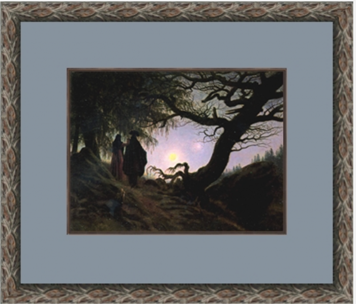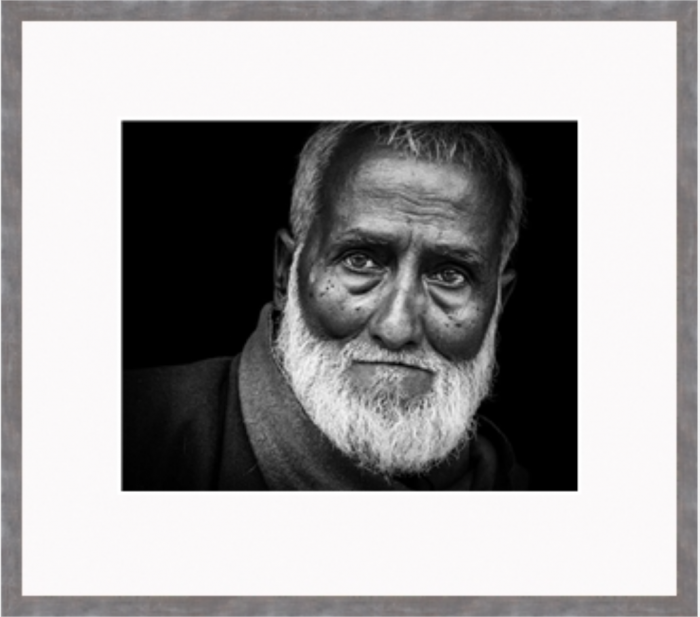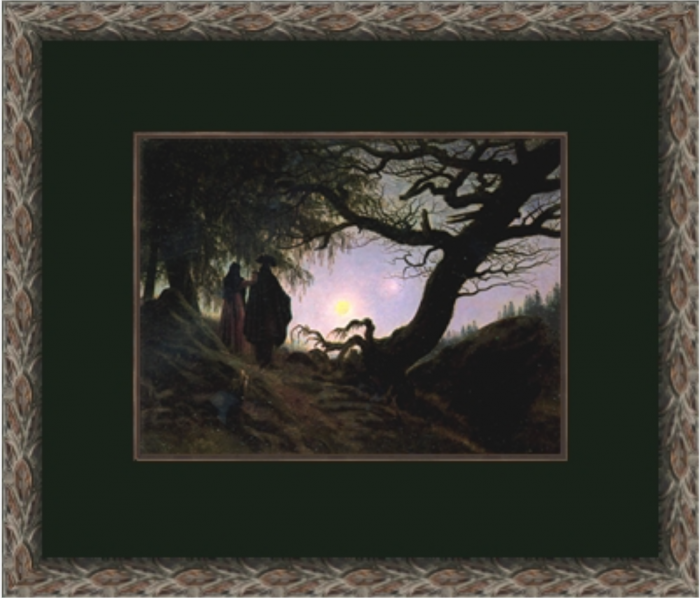When we’re working with our customers to design framing, a common question is whether a light mat or a dark mat is best. Like so many things in life, it depends. A lot of photographers mat their work strictly in white mats, but that doesn’t mean it’s the “right” or only choice. And sometimes a customer brings us a very dark piece of art and their first instinct is to select a light mat to “brighten it up.” It sounds very counterintuitive, but in cases like this it may be best to go with a dark mat instead. Let’s look at an example.
Sometimes artists will use very dark colours and backgrounds to highlight the subject of the artwork. The subject is lighter in colour or is gently illuminated, such as in this dramatic black and white portrait. The man is defined by his white beard, his eyes and highlights on his cheeks, all in stark contrast to the background. The dark mat continues this visual, giving the defining features and highlights the prominence they need.
Of the two designs, this is the more successful. The dark mat provides the dramatic contrast the portrait needs and the photographer intended.
It is not just a feature of modern photography; consider this painting, Man and Woman Contemplating the Moon, in which the moon, Venus, and the night sky, the true subjects of the painting, stand out because of the contrast between them and the dark background.
In either of these cases, a light mat would simply make the dark background more prominent because it is contrasted against the mat, making it look that much darker, and washing the subject out. Also, the eye is drawn to the mat, out and away from the artwork instead of going to the focal point. A dark mat though better preserves the artist’s intent of drawing the eye to the subject through dramatic contrast.
We know a very dark mat can be intimidating, and it goes against what might seem right, but somehow it works! We’d be happy to show you some examples with your artwork. That’s why we’re here, after all!



